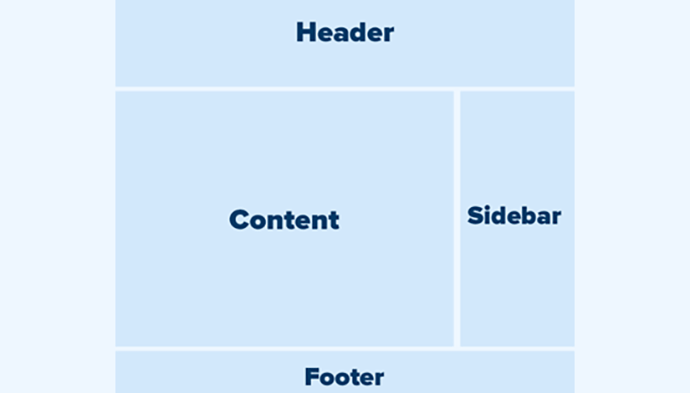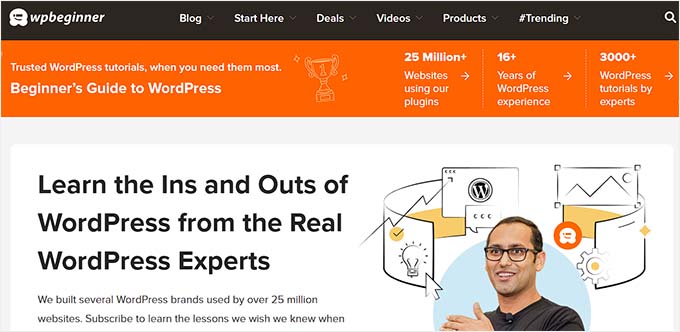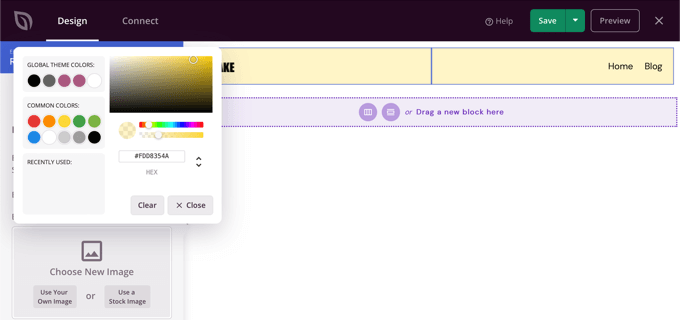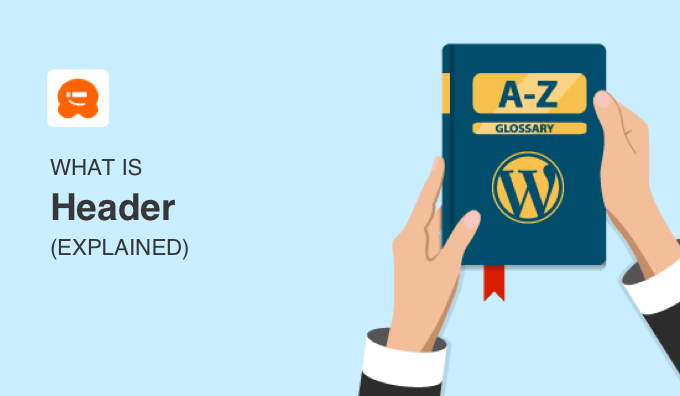The header is the area located at the top of your WordPress website. Typically, it features the website logo and primary navigation.
Additionally, it may include links to social media, business hours, account options, and a search bar.
The header is displayed consistently on every page and post, creating the first impression for your visitors. Many website owners personalize their headers to align with their brand and improve user navigation throughout their content.
What Is a Header in WordPress?
Numerous WordPress sites feature a standard layout comprising a header, content section, and footer, often accompanied by a sidebar adjacent to the content area.
As the header appears at the top of every page, it’s the initial element that captures the attention of your visitors.
Therefore, it’s essential to design it to be visually appealing, practical, and aligned with your branding to create a positive first impression for your users.

Headers often display the website logo and title, navigation menus, and other important elements that you want users to see first.
For example, here is the header from the WPBeginner website. It’s designed to help our users discover our best content and find what they are looking for quickly.

In a WordPress theme, the header is typically managed by a single file called header.php. Any modifications made to this template will affect the entire site. If the header includes a menu, it is usually managed through WordPress’ custom menu feature.
Additionally, the header template may house several essential components of your site, including links to stylesheets, website metadata, and icons for browsers and mobile devices.
Although these elements are not visible in the header itself, they reside within the code’s tags and are processed by the browsers that access your website.
What Is a Custom Header in WordPress?
A custom header is a feature available in WordPress themes that enables you to personalize the header and header image of your website. You can modify your webpage header by adjusting the color palette, altering the layout, or changing font sizes.
Additionally, you can incorporate images, create a widget area, or assign different headers to various sections of your site. Some themes even allow for full-width header images combined with a tagline or a call-to-action button.
You also have the flexibility to reposition elements like the logo, navigation menus, and header images. If your theme has limitations, you can explore plugins or CSS code snippets for more advanced header customizations. For detailed instructions, check out our guide on customizing your WordPress header.

We trust that this article has enhanced your understanding of headers in WordPress.
Be sure to check out our Additional Reading section below for more articles filled with valuable WordPress tips, tricks, and ideas. If you enjoyed this piece, consider subscribing to our YouTube Channel for insightful WordPress video tutorials. You can also connect with us on Twitter and Facebook.


